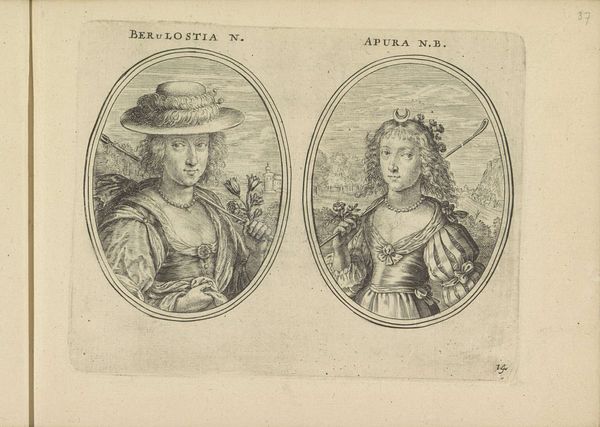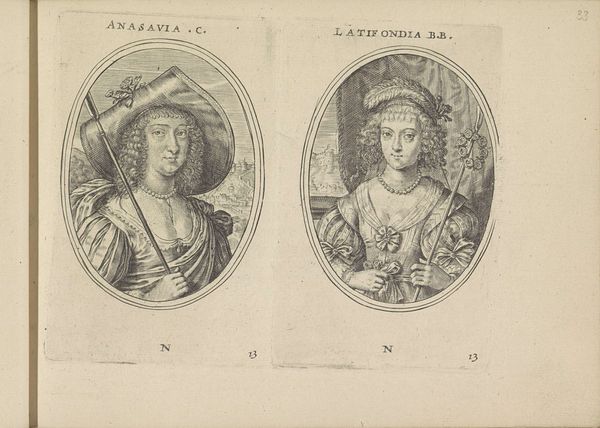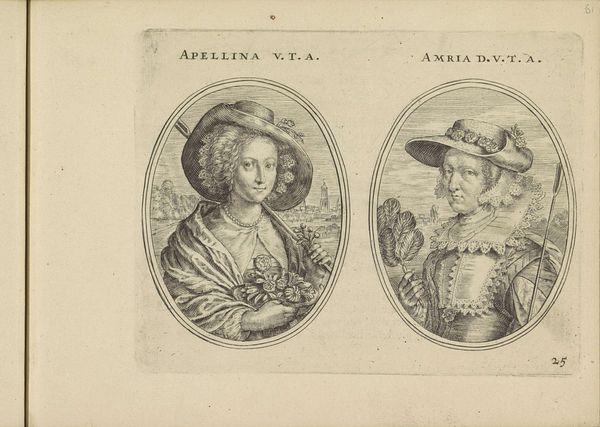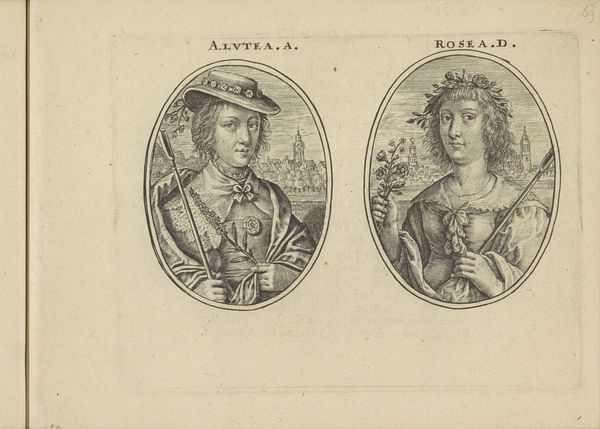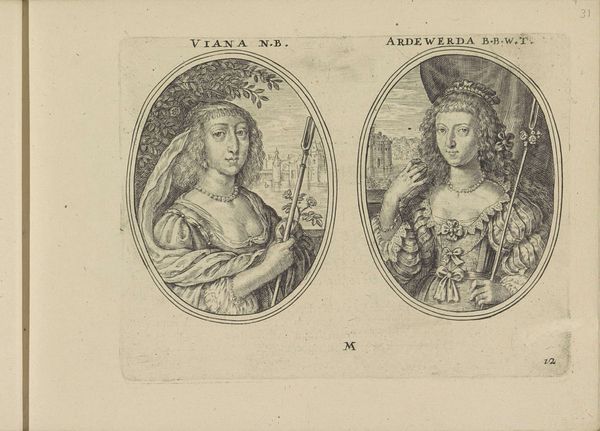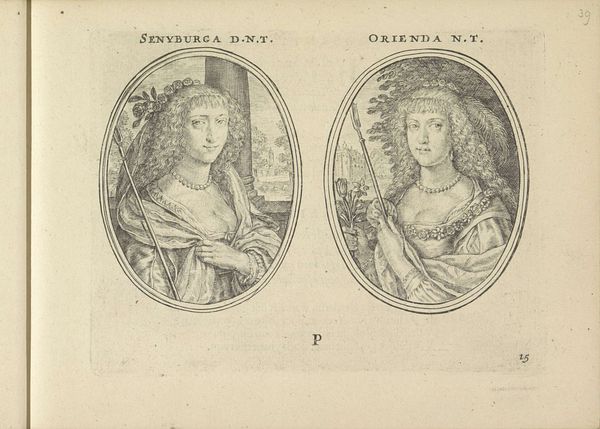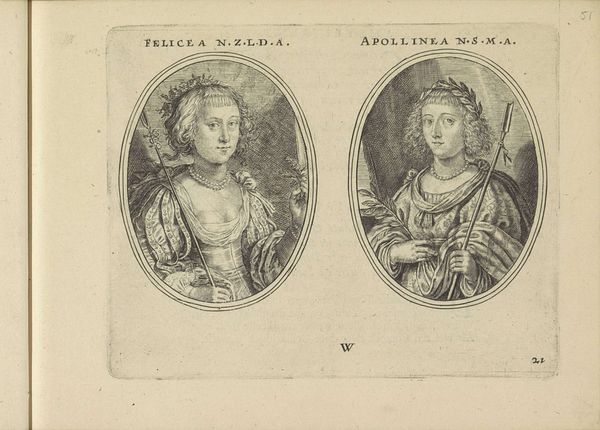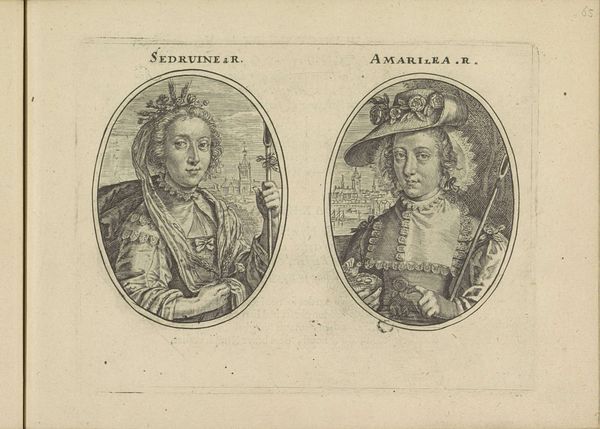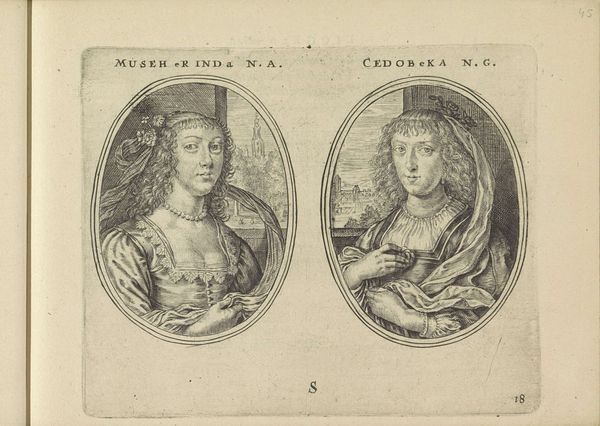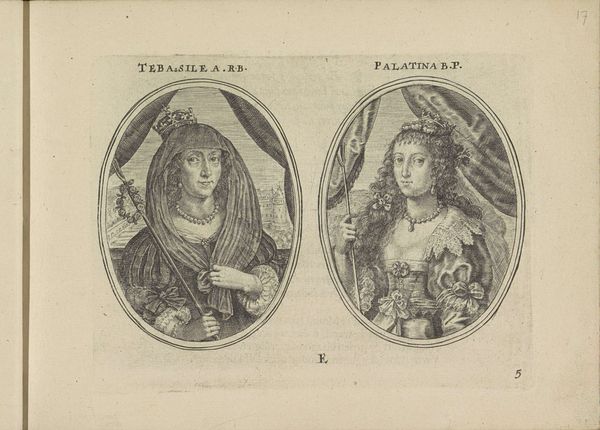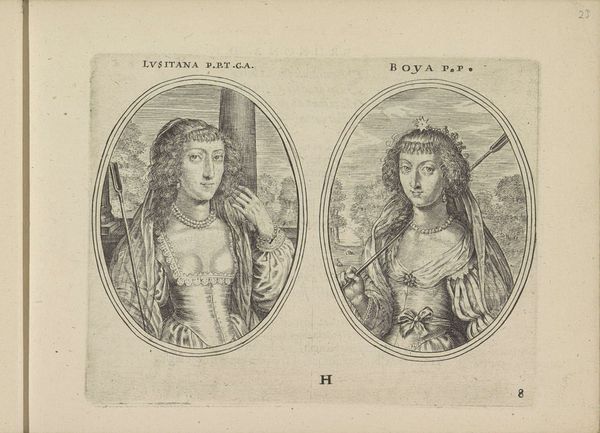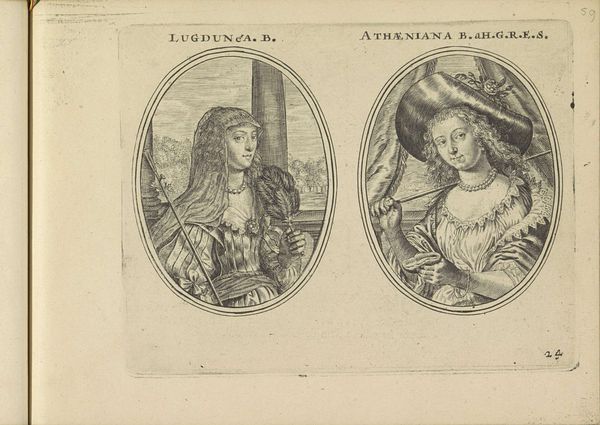
print, engraving
#
portrait
#
baroque
# print
#
figuration
#
line
#
engraving
Dimensions: height 114 mm, width 146 mm
Copyright: Rijks Museum: Open Domain
Editor: This is "Silvia en Aminta," a print from 1640 by Crispijn van de Passe II, residing at the Rijksmuseum. It’s striking how the artist used engraving to create these two distinct portraits. What stands out to you in this piece? Curator: It's essential to consider the material conditions of its creation. This isn't simply an image; it's an object produced through a very specific labor process: engraving. How might the relatively accessible and reproducible nature of prints impact the consumption of these images compared to unique painted works? Editor: That’s a great point, because prints are designed for wider distribution. Curator: Precisely. And who are Silvia and Aminta? Are they allegorical figures or portraits of actual people? Understanding their identities and the social context of their representation is critical. Note also the detailed rendering of the figures’ clothing, contrasting textures achieved through the controlled application of the engraver’s tools. Editor: I noticed the clothing too. Silvia has simpler adornments with flowers and leaves, and Aminta is in much fancier attire with what looks like jewelry. Would the materials in their clothing relate to their identity? Curator: Definitely! The costuming, jewelry, even the way they're holding flowers points towards socio-economic markers. Line engraving also dictated aesthetic preferences in 17th century printmaking, so how can the choice of line contribute or not to conveying the details in their dress and adornments? Editor: So, by considering the materials, the engraving process, and the social standing these women portray, we gain a deeper understanding than simply viewing it as a decorative piece. Curator: Exactly. We start to unpack the power structures at play in 17th-century Dutch society, revealing how status, production, and consumption are intricately linked through even a seemingly simple print like this. Editor: I never thought about art quite this way. Thanks!
Comments
No comments
Be the first to comment and join the conversation on the ultimate creative platform.
